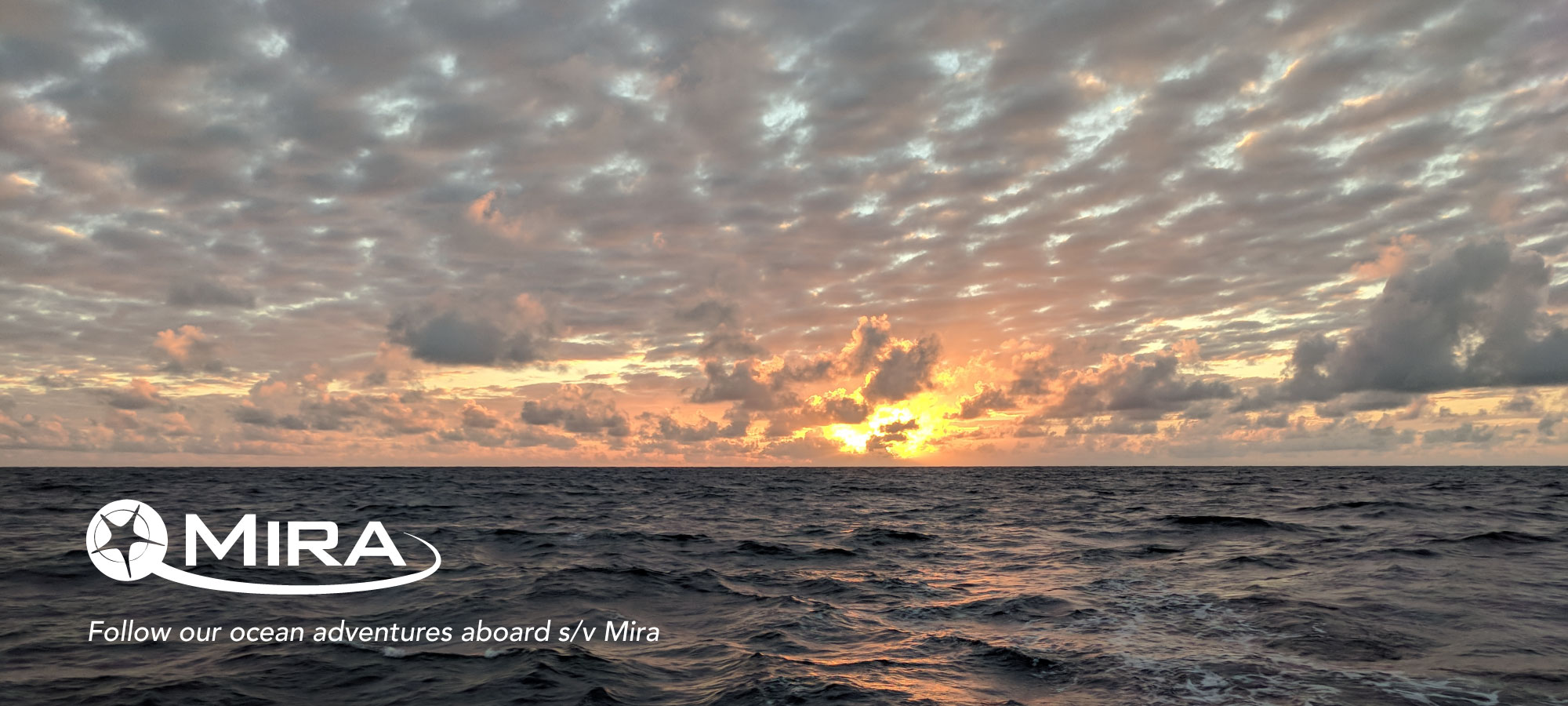Again, we say – the Azores are our favorite place we’ve sailed to – EVER!!

Sao Miguel is the largest island in the Azores, and if you could only visit one of these magnificent 9 islands, we would be hard-pressed, but Sao Miguel is the one to choose. Sao Miguel is the ultimate nature lover’s paradise brimming with velvety green fields, sparkling volcanic lakes and craggy volcanoes. Nature beckons from all sides – begging to be explored, swam and hiked, and it has an international airport. Ponta Delgada, the largest and capital city of the Azores, was the perfect spot to keep Mira and launch more than 7 days of island exploration.




Lagoa das Sete Cidades is the iconic picture everyone sees when they google the Azores. The scene is even more beautiful in person, if you can possibly imagine. Two amazing panoramas capture the entire vista of the 12 km crater of Sete Cidade. Vista do Rei (the King’s view) is the historic view from one end of the twin lake. But, our favorite sight is the Miradouro da Boca do Inferno with a 360 degree view encompassing the twin lake, much of the crater and two other lakes, Rasa and Santiago.
The twin lake with one blue and one green side was born from rainwater that filled its almost perfectly round crater, left behind from a collapsed volcano. But, I prefer the romantic version of the origin of the lake. The tragic love story goes like this. Long ago, a Princess and a shepherd fell madly in love. The Princess had been betrothed to another, and her father, the King, refused to allow them to see each other. At their last heartbreaking meeting, their flood of tears filled the lake at Sete Cidades – a blue side from the tears of the blue-eyed Princess and a green side from the tears of the green-eyed Shepherd. So Sweet!!
Miradouro means viewpoint in Portuguese. All over the island, there are signs that point to the “Miradouro”. Like Pavlov’s dogs, we learned quickly. Upon spying a “Miradouro” sign, we would careen wildly off the winding roads and were continually rewarded with astounding sights.
Why are there so many miradouros? Thousands of years ago, the towering volcanic peaks of Sao Miguel became dormant, collapsed and created yawning craters all over the island. Abundant rainfall filled the craters or “caldeiros” with water, forming magnificent lakes. The ridge lines surrounding the caldeiros, yielded breath-taking viewpoints. Santa Iria, Pico do Barossa, Escalvado, and Lagoa do Fogo, just to name a few of the captivating vistas.
Sao Miguel is like Jurassic Park! The stunning backdrop of Sao Miguel literally dripped bands of color. Lush, green, oversized ferns and trees. Pools and cascading waterfalls in the Caldeira Velha were striped with bright orange minerals. Flowers in the Terra Nostra Garden were brilliant in every color of the rainbow, fed by the volcanic soil. Smooth green glass shimmered in the Lagoa Congro. Hydrangeas as big as my head and dense shrubs taller than Mira. Left us speechless!
Lagoa das Furnas
Parque Natural da Ribeira dos Caldeiroes is a park that stretches along the Ribeira dos Caldeiroes on the slopes of the beautiful mountain range, Serra da Tronqueira. The forestry flourishes with large-sized tree ferns, cedars and hydrangeas in abundance. Abandoned stone water mills dating from the 16th century perch on the edge of the river. Rambunctious waterfalls tumble and cascade over the rocks and boulders. A picturesque spot to launch the drone!
There is 1 Cow for every person on Sao Miguel. Cows and bulls are a big deal in the Azores. There are statues and monuments everywhere. Beef and milk products are used locally and for export. Seafood, unique fruits and vegetables, wine, and tea are some of the other natural resources that the Azores are blessed to have.
I am fascinated by the black and white tile mosaic streets and sidewalks all over the Azores. Turns out that the delicately designed walks are called “Calcada Portuguesa” and can be found throughout Portugal. Talented, and very patient, craftsmen chisel black volcanic basalt and white limestone into tiny flat squares and painstakingly place them on a gravel bedding to form beautiful designs. The Azores have no shortage of volcanic rock – so their patterns seem to be mostly black. And, I loved that every street in Sao Miguel seemed to have its own unique pattern!
NEXT BLOG – OUR DRIVING TOUR OF PORTUGAL

Really enjoying your blog, y’all. Glenn is getting very facile with the drone. Safe travels my friends.
LikeLike
Thanks Tom! But still feel like a rookie!
LikeLike